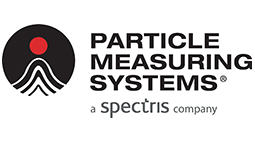Mechanisms of Filtration for High Efficiency Fibrous Filters
Overview
There is a popular misconception that fibrous filters behave like a sieve where particles above a certain size are trapped and smaller particles pass through. While some filters such as membrane filters in liquids do function this way, fibrous air filters defy common sense by actually trapping smaller and larger particles more effectively than mid-sized particles. High efficiency fibrous filters comprise a large percentage of the filters used around the world today. Applications include respiratory protection, air sampling, clean rooms, industrial processes, and building ventilation systems. A fibrous filter is comprised of a large number of randomly oriented fibers. These fibers form a dense material or mat which captures and retains particles throughout its depth or thickness. It is the thickness, fiber diameter and density of the mat that enables fibrous filters to function. Filter performance is often expressed in terms of percent efficiency, defined as the ratio of upstream particle concentration compared to the downstream concentration that has passed through (multiplied by 100). Figure 0



The efficiency of a fibrous filter varies for different particles sizes and flow rates. It is meaningless to specify the efficiency of a fibrous filter without also stating the pertinent particle size and flow. For example, NIOSH defines a P100 (formerly HEPA) respirator filter to be at least 99.97 percent efficient for 0.3 micrometer (μm) particles at a flow rate of 85 liters per minute (lpm). Similarly, an N95 class filter must be at least 95 percent efficient against 0.3 μm particles at 85 lpm. The reason that a particle size of 0.3μm is commonly referenced is because particles near 0.3 μm in diameter are more likely to get though the filter than any other size. In other words, it is the worst-case particle size. The filter's efficiency is higher at any other size. Read on to find out why.
Filtration Mechanisms
Various physical mechanisms contribute to a high efficiency fibrous filter's effectiveness in capturing particles. The most predominant mechanisms are interception, inertial impaction and diffusion.
Interception
Interception occurs when a particle which is following a gas streamline comes within one particle radius of a filter fiber. The particle touches the fiber and is captured, thus being removed from the gas flow. This is illustrated in Figure 1.
For a given particle size, there are certain streamlines which will move close enough to a filter fiber so that the particle will be captured. Streamlines further than one particle radius away from a filter fiber will not contribute to the interception mechanism.
Inertial Impaction
Inertial impaction occurs when a particle is so large that it is unable to quickly adjust to the abrupt changes in streamline direction near a filter fiber. The particle, due to its inertia, will continue along its original path and hit the filter fiber. This type of filtration mechanism is most predominant when high gas velocities and dense fiber packing of the filter media is present. Figure 2 below illustrates this mechanism.
Diffusion
To explain the diffusion mechanism of particle capture, we first need to do a quick review of the kinetic theory of gases. This theory explains that a gas is composed of a large number of molecules which are small in size when compared to the distances between them. These molecules behave like ridged spheres which travel in straight lines when they're not bumping into each other. In actuality, these molecules collide with each other so much that they move in random, zigzagging path. This random motion is referred to as Brownian motion. The diffusion mechanism of particle retention is the result of the Brownian motion of gas molecules. Small particles, with diameters in the range of 0.1 μm and below, tend to make random motions due to their interaction with the zigzagging gas molecules. As these small particles are bumped by the gas molecules they too begin moving randomly about, bumping into other particles as well. Diffusion is predominant with low gas velocities and smaller particles. The smaller a particle is and the slower the flow, the more time it will have to zigzag around, thereby giving it much better chance of hitting and sticking to a filter fiber.
Overall Filter Efficiency Versus Particle Size
A graph showing how filter efficiency varies with particle size is shown in Figure 4. As can be seen from the graph, a filter's ability to remove particles from a gas stream is directly related to the size of the particles in the stream. For very small particles, less than 0.1 μm in diameter, the primary filtration mechanism is diffusion and the filter is very efficient. For particles between approximately 0.1 and 0.4 μm the filter is less efficient as the particles are too large for a great diffusion effect and too small for a large interception effect. Particles above approximately 0.4 μm enter the region where interception along with inertial impaction are predominant and the filter is very efficient again.
Summary
A filter's ability to capture particles depends on the particle size passing through its fibers as well as the velocity of the flow passing through the filter. Contrary to popular belief, a fibrous filter does not simply capture all particles above a certain size. Three mechanisms are predominant in determining a filter's efficiency versus particle size. These are: interception, inertial impaction, and diffusion. Large particles above 0.4 μm in diameter, will be captured due to both the impaction and interception mechanisms. Medium particles, generally considered as the most penetrating, in the 0.1 to 0.4 μm diameter range, are captured by both the diffusion and interception filtration mechanisms. Small particles, below 0.1 μm in diameter, are captured by the diffusion mechanism.
The result of the various filtration mechanisms is an efficiency versus particle size curve which has an upside down bell shape, as illustrated in Figure 4. A fibrous filter is generally least effective at removing particles in the 0.1 μm to 0.4 μm particle diameter range. To test a filter for worst case situations, it should be tested with an aerosol at the most penetrating particle size.
Figure 0: Percent Efficiency
Figure 1: Direct Interception of a Particle by a Filter Fiber
Figure 2: Inertial Impaction
Figure 3: Diffusion
Figure 4: Filter Efficiency Versus Particle Size









